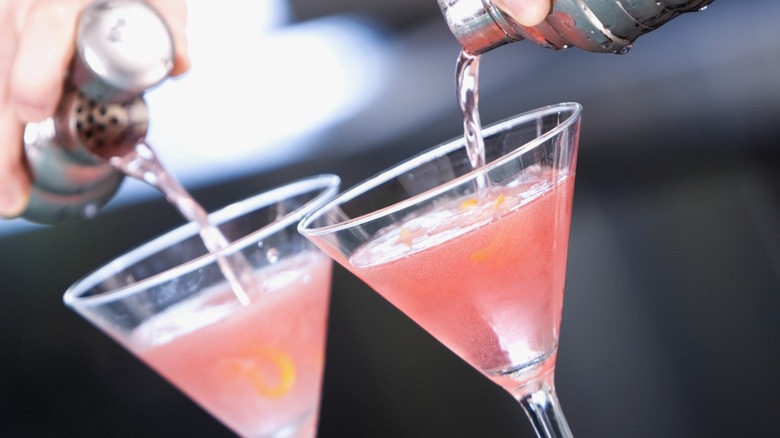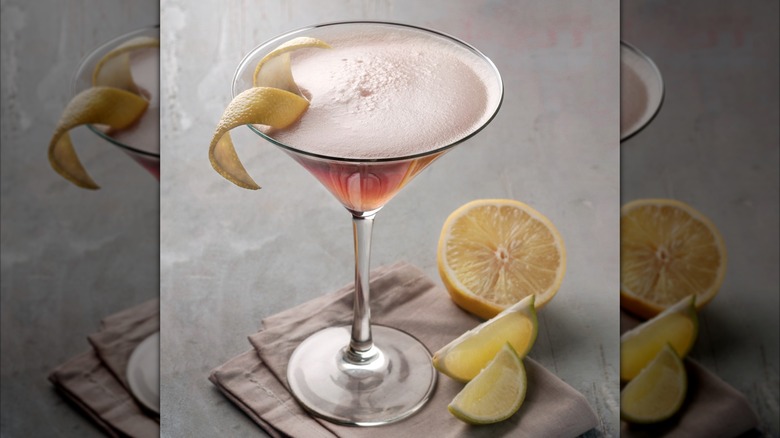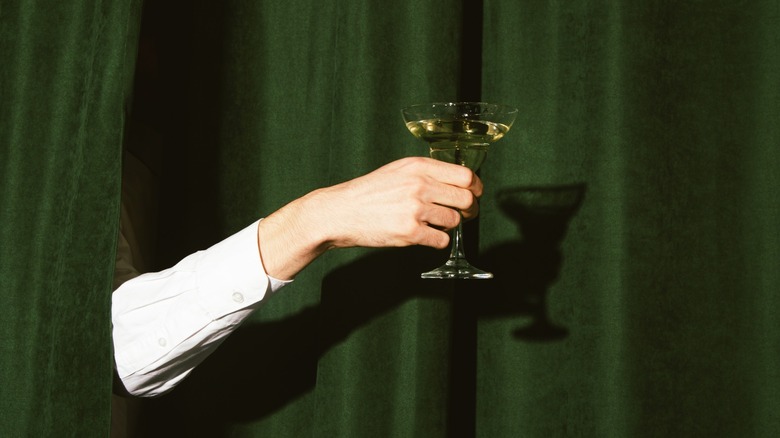Are French Martinis Really From France?
It's 9 P.M. in SoHo. You weave through the red leather booths and settle at the bar. One sip of a French martini, and you're whisked away to a café along the Seine — or so it feels. But you're not. You're at Balthazar, a love letter to the Parisian brasserie. The French martini? Pure New York. It's not truly French, just an echo of its flair — a fleeting taste of somewhere else, as you sit in the heart of Manhattan.
Unlike a savory martini, a French martini is sweet, fruity, and made with vodka, raspberry or blackcurrant liqueurs like Chambord or Lejay Crème de Cassis, pineapple, and garnished with a lemon twist. It's a juicy tropical blend with a delicate ruby hue that renders it exotic. The only truly "French" element is the liqueur — Lejay Crème de Cassis from Dijon or Chambord from the Loire Valley, both symbolic in French craftsmanship. The drink's origins, like its flavor, are intertwined with two legendary figures from New York City's restaurant scene, making its backstory as iconic as the cocktail itself.
The Birth of French Martini
A true Big Apple classic, the flamboyant French martini has a quite short history. Although crafted by the renowned New York bartender Dale DeGroff in the 1980s, the French martini didn't gain real momentum until 1996, when DeGroff debuted it at Pravda, a hotspot owned by acclaimed restaurateur Keith McNally.Its popularity soared in 1997 when McNally added it to the menu at his iconic Balthazar, where it quickly became a staple and has remained ever since.
The original recipe — Ketel One Vodka, Lejay Crème de Cassis, pineapple, and lemon — still appears on Balthazar's cocktail menu, tucked away in the classic cocktails section on the unassuming bottom left corner, priced at $22. Though traditionally garnished with a lemon twist, bartenders have since added raspberries and pineapple slices to match the cocktail's fun and fruity vibe.
Despite the name, the French martini strays far from being a classic martini, as it lacks dry vermouth, a fortified wine that remains an essential component of a classic martini. Over time, however, "martini" has become a catch-all term for any drink served in a V-shaped glass, allowing this fruity creation, made with French fruit liqueur, to inherit the name.
While an American invention, the French martini has captured the attention of discerning palates worldwide. In 1997, Simon Difford, a renowned cocktail expert and founder of "Difford's Guide," praised it as his "favorite martini of the moment" after being served by Dick Bradsell, Europe's most influential bartender at the time.
The evolution of martinis: from classic to French flair
The cultural critic, H.L. Mencken, once called the martini "the only American invention as perfect as a sonnet," a nod to its sophistication. The martini has come a long way from its simple gin (or vodka) and vermouth roots. Once a symbol of rebellion during Prohibition, it has embraced playful iterations like the sweet Pornstar martini, zesty Appletini, and bold espresso martini. Despite all these transformations, the martini's iconic status endures, adapting to cultural shifts through innovation without losing its timeless allure. From Winston Churchill's debated martini recipe to James Bond's Vesper, the martini stands as a cultural symbol that transcends generations while bridging tradition and modern tastes.
Among the many "-tinis," the French martini may not be the flashiest, but it's carved out a space of its own. A faux French love affair born in New York, it wooed drinkers around the globe with its playful charm. It may not be the biggest star of the martini craze, but it certainly sparked plenty of creative riffs. So, why not shake up some French martini flair? A love affair between New York buzz and Parisian dazzle — who's ready to clink?


